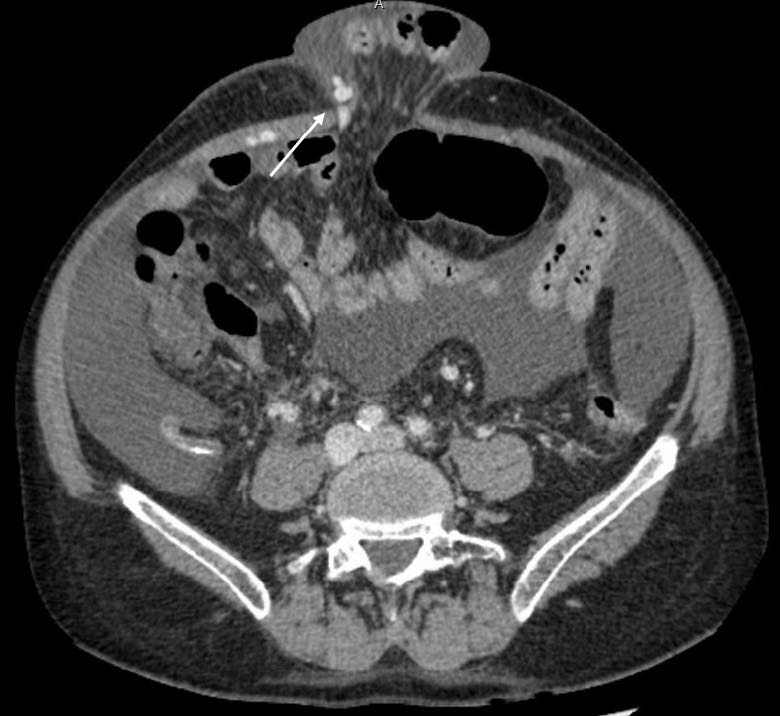Flood Syndrome: Endovascular management of spontaneous rupture of an umbilical hernia due to long-standing ascites – A case report
DOI:
https://doi.org/10.3941/jrcr.v17i8.4884Keywords:
Flood syndrome, TIPS, Ascites, Umbilical hernia, CirrhosisAbstract
Umbilical hernias are common in patients with cirrhosis of the liver and ascites; however, spontaneous rupture of the hernia is a rare complication. Flood Syndrome occurs very rarely in cirrhotic patients with massive ascites and refers to the spontaneous rupture of an umbilical hernia followed by leakage of ascites fluid. A literature search shows that patients have been managed both operatively and nonoperatively for this condition. We report a case of a 56-year-old man with a history of alcohol-related liver cirrhosis and massive ascites refractory to medical therapy with sudden and spontaneous perforation of his hernia leading to drainage of ascitic fluid from the abdomen. We performed a transjugular intrahepatic portosystematic shunt to relieve portal pressure and subsequent intraabdominal pressure. The patient had resolution of symptoms and the ascitic fluid outflow was resolved.

Downloads
Published
Issue
Section
License
Copyright (c) 2023 Journal of Radiology Case Reports

This work is licensed under a Creative Commons Attribution-NonCommercial-NoDerivatives 4.0 International License.
The publisher holds the copyright to the published articles and contents. However, the articles in this journal are open-access articles distributed under the terms of the Creative Commons Attribution-NonCommercial-NoDerivs 4.0 License, which permits reproduction and distribution, provided the original work is properly cited. The publisher and author have the right to use the text, images and other multimedia contents from the submitted work for further usage in affiliated programs. Commercial use and derivative works are not permitted, unless explicitly allowed by the publisher.





